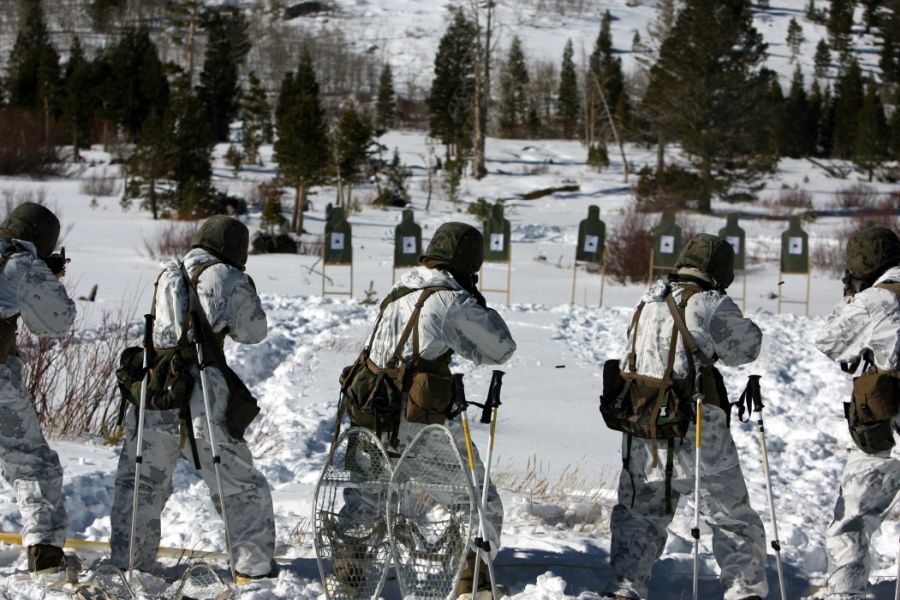MARPAT™ camouflage pattern - Winter and Snow camo
The American military organization USMC first adopted the Extreme Cold Weather Clothing System (ECWCS) in 1985 to replace the Korean War Cold Weather clothing (EW). Over the next twenty years, the USMC made regular minor changes to the system to improve material performance (or some of its layers). However, recent conflicts have created a need for a more systematic solution for clothing and equipment.

Deployment: The most well-known user is undoubtedly the USMC, but also other countries like Herzegovina and Bosnia. Other similar digital camouflage patterns have been developed (or successfully developed) by other nations: see Italian Vegetato, Estonian ESTDCU, etc.
The snow camouflage parka, pants, and backpack are designed to be worn over other clothing underneath and only when such coverage is necessary. It utilizes a distinctive digitalized snow camouflage system that is functional in various environments. Additionally, the fabric is lightweight, water-resistant, and quick-drying.
When did work begin on MARPAT™: Marine Pattern Camouflage?
This began in 2000 with a clear intent: to create an innovative and improved camouflage pattern for the US Marine Corps (USMC). This process was preceded by a phase of thorough study of all existing patterns that were promising for the USMC (a whole hundred). Ultimately, the USMC decided on a trio of camouflage patterns worth further development and study: the "tiger stripes" from Vietnam, a commercial version of the mentioned tiger stripes, and a variation on the British DPM (Disruptive Pattern Material) from Rhodesia. All three were sent after scanning and digital editing to a textile mill, where it was found that the Rhodesian DPM would be the most suitable for further work. This happened even though many people and experts believed that the USMC deserved something of higher quality and more original than just a foreign pattern further modified. However, the USMC was fortunate: at that time, the Canadian army was already using the CADPAT camouflage pattern, so eventually, the American and Canadian governments began cooperation on the MARPAT™ project and camouflage pattern.
MARPAT™ is digital (and thus pixelated) and consists of variously colored squares that differ according to the environment and season. At that time, it was still designated as the Marine Corps Combat Utility Uniform Pattern, and it was introduced into the military in 2002 (it was also introduced in Iraq, by the way).
In what form does MARPAT™: Marine Pattern Camouflage exist?
Initially, there were three versions: Woodland, Desert, and Urban (for the forest, desert, and city). The urban pattern has not yet received approval for active duty, but it is undoubtedly only a matter of time; after all, today, everyone knows that digital patterns are much more effective at camouflage than natural ones.




























































































































